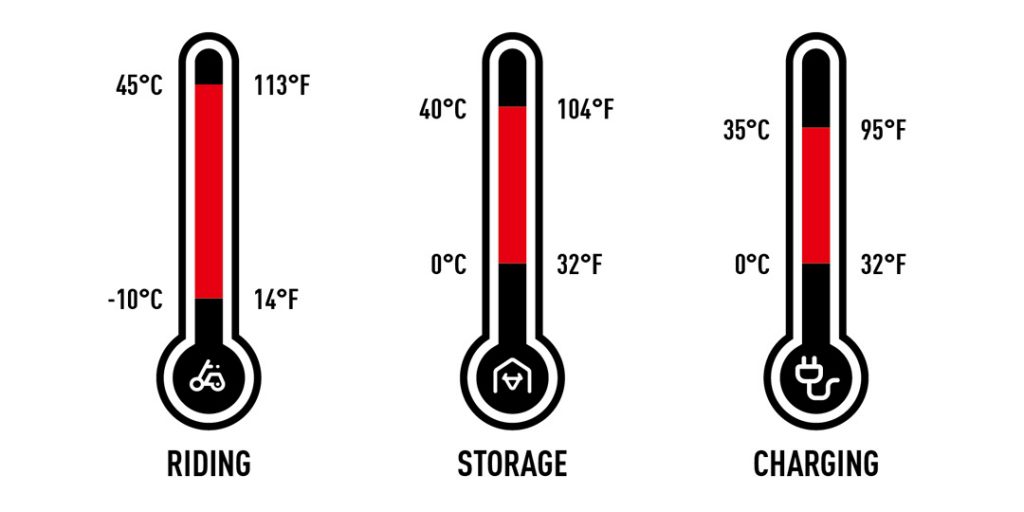If you haven’t heard, NIU riders around the world recently surpassed 10 billion km traveled on their electric scooters. To celebrate this monumental achievement, we took this opportunity to highlight NIU users around the world and, with the help of our Instagram followers, we also explored what 10 billion km actually looks like.
Aside from the immense support from our riders, what made this achievement possible? Batteries. They are the core of every electric vehicle around the world, including NIU scooters. Batteries are an essential leap forward for sustainable electric transportation.
But what are some battery best practices to maintain their longevity? Let’s look at some common questions that NIU riders might have:
Why do I need to maintain my scooter battery?
What is the ideal ambient temperature for a lithium-ion battery?
How should I charge my battery?
How do I safely store my battery?
What other battery best practices should I follow?
Why do I need to maintain my scooter battery?
Every NIU vehicle is powered by a battery pack that includes lithium-ion battery cells.
While lithium-ion batteries are very energy dense and light, they do require special attention for everyday use and storage. Just like laptops, smartphones, and countless other devices that use rechargeable lithium-ion batteries, there are best practices you can follow to preserve the lifespan and minimize the deterioration of electric scooter batteries.
By using the straightforward advice in this article, you can ensure your NIU scooter battery will keep its capacity and performance for as long as possible.
Battery best practices: ambient temperature

You should always be mindful of the ambient temperature with a rechargeable lithium-ion scooter battery:
- Riding: -10°C to 45°C (14°F to 113°F)
- Storage: 0°C to 40°C (32°F to 104°F)
- Charging: 0°C to 35°C (32°F to 95°F)
Using, storing, or charging a lithium-ion scooter battery outside of these temperature ranges may lead to reduced battery life or critical battery issues.
How should I charge my scooter battery?

If you own a NIU scooter, then you can plug in and charge the scooter directly, or remove the battery pack from the scooter to charge inside your home, office, or anywhere an indoor wall outlet is available. Some features will remain active on your NIU scooter, even with the battery unplugged.
Whether plugging in to the scooter itself or charging the battery separately, make sure the environment meets these requirements:
- Temperature between 0° and 35° Celsius (32° to 95° Fahrenheit)
- The power adapter is in an open, non-confined space to properly disperse heat
If the battery level is less than 20%, you should charge the battery pack as soon as possible to avoid critical battery issues. When the battery pack is exhausted, the Battery Management System (BMS) will enter a “sleep state”, so the power adapter will no longer properly charge the battery. If this occurs, you should contact your nearest NIU dealer for battery service; do not attempt to repair or disassemble the battery pack.
How do I safely store my battery?

If you do not use your NIU electric scooter or charge the battery for more than 15 days, there are some crucial battery best practices to keep in mind to maintain battery health.
If your vehicle has a removable battery pack, you can unplug it and store the battery in a safe environment:
- Temperature between 0° and 40° Celsius (32° to 104° Fahrenheit)
- Away from heat sources, open flames, flammable or explosive gases, and liquids
- On a secure surface without any risk of falling
During storage, it is best to keep the battery level at about 50% to maintain longevity. When reconnecting the battery pack to your vehicle after storage, you can perform a self-check to determine potential issues. If you confirmed that the battery is fully charged, but the scooter dashboard indicates the battery level is 0%, then unplug the battery and contact a nearby service center. They will be help you test the battery and ensure it is operating properly.
What other battery best practices should I follow?

Perhaps one of the best advantages to owning a NIU electric scooter is the extensive global dealer network, which offers high quality service to our riders around the world.
NIU products are constantly being updated and upgraded, including the BMS, or Battery Management System. You may receive a prompt in the NIU app to visit a local NIU service station to update the BMS to the latest version, or you can have your local shop confirm that you have the most current version when you visit for a regular check-up.
NIU provides a 2 year or 20,000 km warranty for after-sales service on our lithium-ion scooter batteries, so you can ride with the confidence that you are covered.
Our friendly, knowledgeable dealership staff and customer service team are always here to assist you as well. You can contact your local dealer directly or email us at questions@niu.com for any inquiries you might have.
Thank you for reading and we wish you safe, emissions-free journeys!






